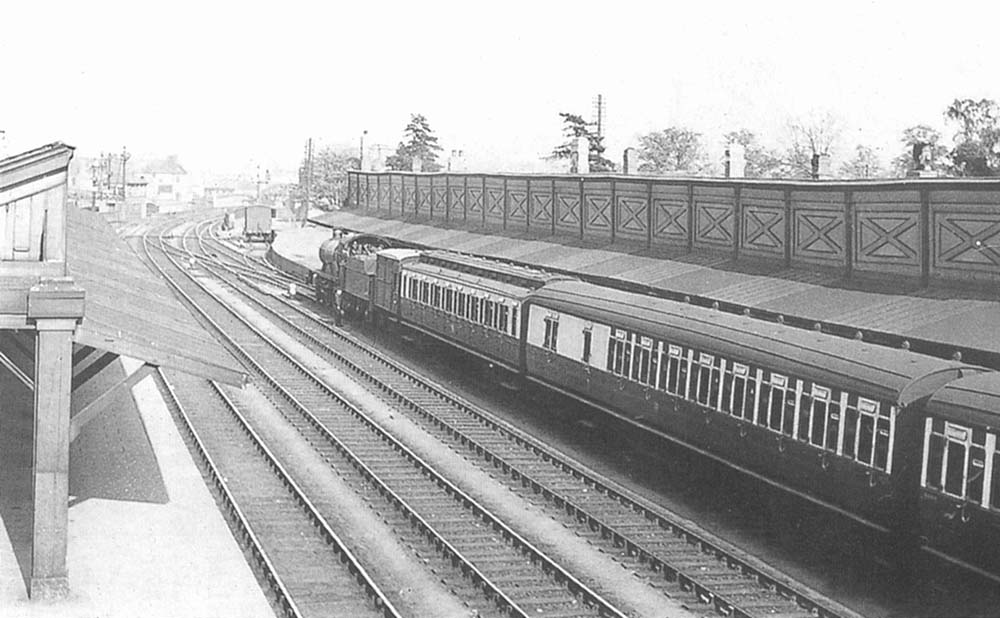|
|
 |
 |
|
GWR Route: Banbury to Wolverhampton
Leamington Spa - Grouping Locomotives: gwrls890
 |
An unknown GWR 4-6-0 Star class locomotive stands at the London
end of an express train on the down platform. Its not known whether the
locomotive is adding the horsebox to the end of a train progressing onwards to
the north or whether the service has terminated at Leamington and is being
taken out to reverse back in to the up platform. The prototype four cylinder
'Star' locomotive was built in May 1906 with experience learned from the
'Saint' class and the French De Glehn engines. By incorporating the De Glehn
cylinder arrangement with two sets of valve gear into an otherwise standard
design, G. J. Churchward produced a masterpiece which harmonised the best
features of the different engines on trial. Allocated No 40, she was built in
4-4-2 configuration as Churchward had not decided which was the best wheel
arrangement for the Great Western. With cylinders of 14¼ x 26 inches and
an unusual scissors valve gear (Walschaert's valve gear was fitted as standard
on all other 'Star' locomotives), she ran unnamed until October 1906 when she
became known as 'North Star'.
Rebuilt in configuration 4-6-0 in November 1909 No 40 was also
given the curved framing that was built on the second batch of production
engines. In December 1912, 'North Star' was renumbered as 4000. One difference
in North Star compared to the rest of the 'Star' class was that the footplate
was built 2½ inches higher and even when this engine was rebuilt in a
'Castle' class locomotive, the footplate kept the non-standard height. Number
4011 Knight of the Garter was fitted with the Swindon no. 1 superheater as
standard together with the French type of bogie. All members of the class were
so fitted with this bogie. The Swindon no. 3 superheater was initially fitted
to number 4021 King Edward and became standard fitting from engine number 4031
Queen Mary, again, previous locomotives of the class were modified from 1913.
The modification which gave the 'Stars' a little more power was an increase in
the cylinder bore to 15 inches. This modification was applied first to number
4041 Prince of Wales and soon afterwards the cylinders of earlier locomotives
were also increased in size. Courtesy of the
Great Western Archive copyright John Daniel 2000.
 back back

|
|
|
